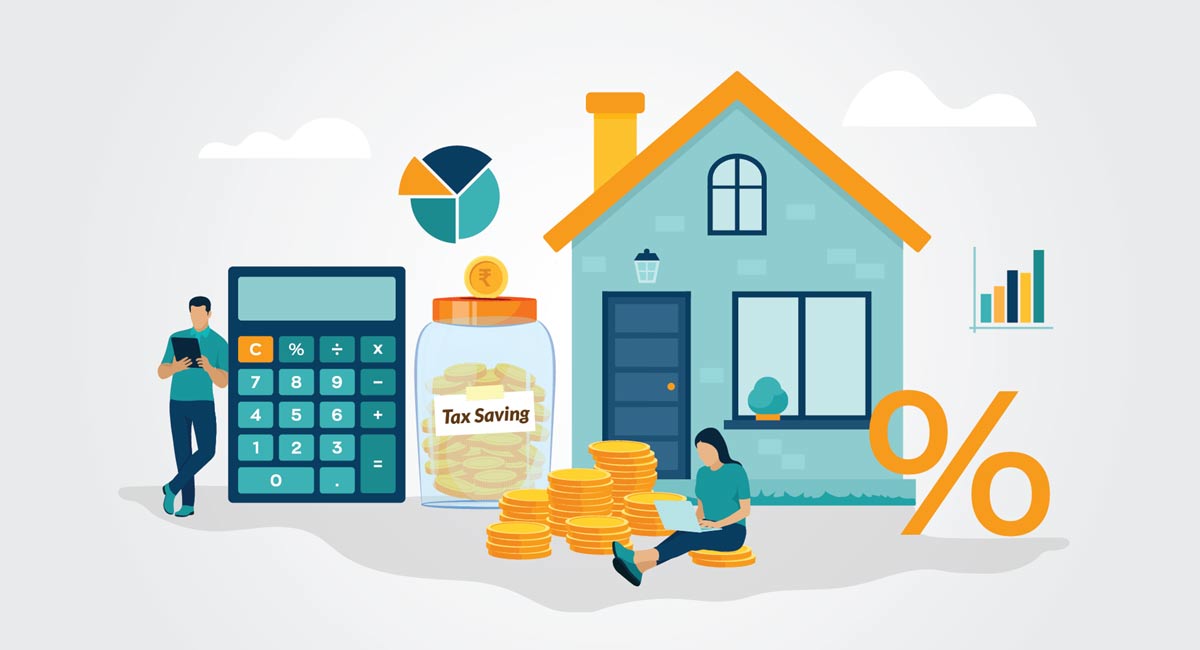
Many factors work in the favour of home loans, further contributing to their growing popularity. Low home loan interest rates, long repayment tenor, affordable EMIs, high loan sanctions, etc., all add to the popularity of housing finance in India. Housing loan tax benefits are one of the most important factors that add to the popularity of home loans. Home loan borrowers can claim home loan tax benefits on both the principal and interest components of their loan.
Section 80C of the Income Tax Act provides details on how much home loan tax exemption can a borrower claim on payments made towards the principal component of their home loan. The maximum limit permissible under this category is Rs.1.5 Lakh. Section 24(b), Section 80EE, and Section 80 EEA, on the other hand, talk about home loan benefits on the interest portion of the loan. In this article, we discuss with our readers simple tips on how to maximise housing loan tax benefit.
Maximizing Home Loan Tax Benefits: A Simple Guide
- Home loan borrowers can claim housing loan tax benefits on payments made towards the repayment of the principal component of their loan up to a maximum of Rs.1.5 Lakh a year under Section 80C of the Income Tax Act. Borrowers must know that Section 80C deals with several different tax-saving instruments, such as PPF, ELSS funds, NPS, etc., and the combined limit for all these tax-saving instruments under Section 80C is Rs.1.5 Lakh.
- Home loan borrowers can further maximize home loan tax benefits under Section 80C by claiming home loan tax benefits on the stamp duty and registration charges paid during the financial year and while buying the property.
- For joint home loans, all the joint home loan borrowers can claim home loan tax benefits separately under Section 80C of the Income Tax Act. As an example, if a husband and wife have availed of a joint home loan, they can both claim tax benefits separately under Section 80C. However, this can be done only when the home loan borrower is also the co-owner of the property.
- Section 24(b) of the Income Tax Act deals with home loan interest deduction. The maximum limit permissible under this section is Rs.2 Lakh.
- If a home loan borrower is repaying more than a single home loan, they can claim home loan tax benefits on both home loans. However, the total tax saving on home loans cannot exceed Rs.2 Lakh. This stands true only for self-occupied properties. For properties that have been rented out, there is no upper limit on the housing loan tax benefit that one can claim under Section 24(b) of the Income Tax Act. In this case, the entire amount paid towards the repayment of the interest component of the loan can be claimed under home loan tax exemption.
- Similar to under Section 80C, joint home loan borrowers can claim home loan tax benefits separately under Section 24(b) to maximize their tax savings.
- First-time homebuyers who have invested in affordable housing can claim an additional home loan tax benefit of up to Rs.50,000 under Section 80EE and up to Rs.1.5 Lakh under Section 80EEA of the Income Tax Act. However, one can claim tax benefits under these sections only if one meets all the eligibility criteria outlined under these two sections.
These are some simple ways in which you can maximize home loan tax benefits. If you are planning to secure a home loan, remember to talk to a home loan tax benefit expert and understand what you can do to maximize the home loan tax benefits available to you. Further, make sure to apply for the loan with an impressive profile, including a high CIBIL score, a stable income and job, a low debt-to-income ratio, etc. This will give you high negotiating power and the ability to secure the loan on profitable terms. Finally, make it a point to use all online tools, such as the home loan eligibility calculator and the home loan EMI calculator, to make your home loan planning foolproof.





